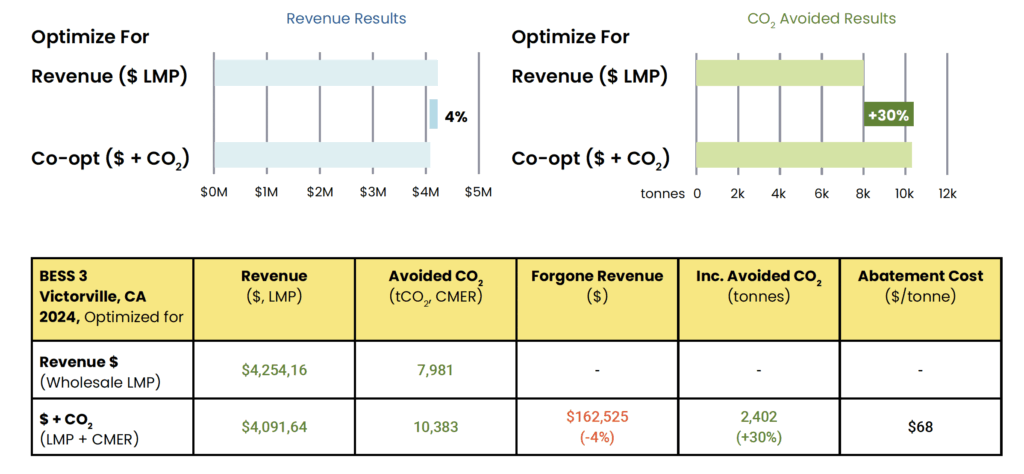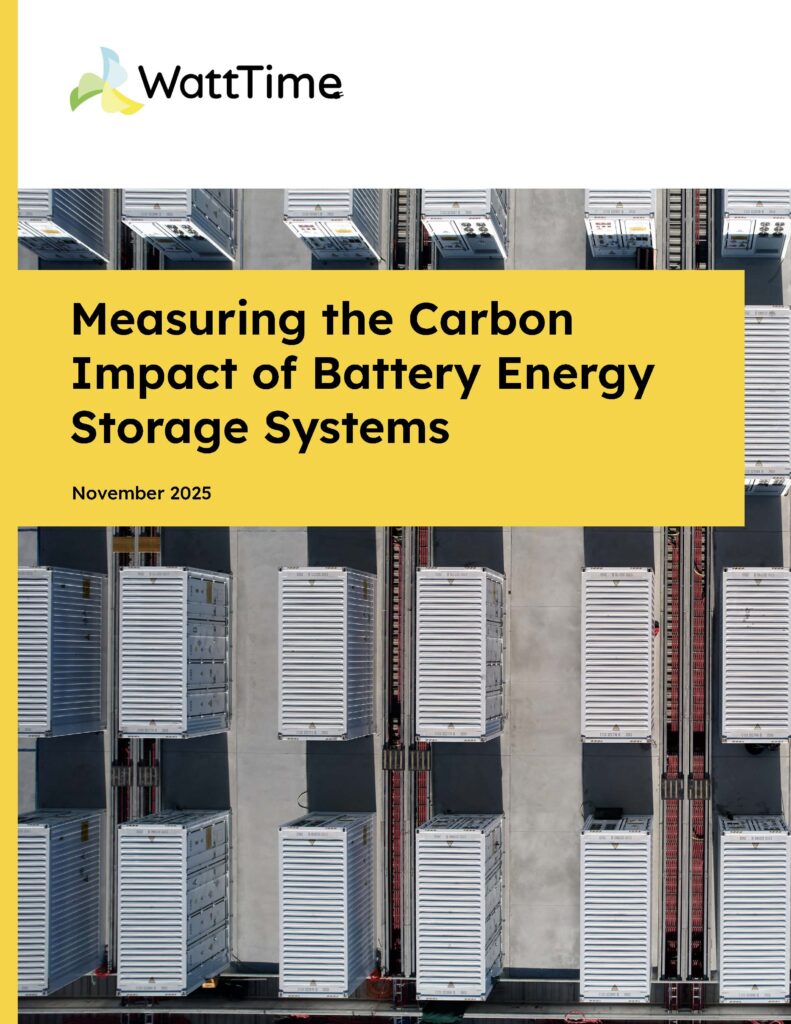


Analysis: Measuring the Carbon Impact of Battery Energy Storage Systems
November 20, 2025
by WattTime
Download the white paper PDF:
Measuring the Carbon Impact of Battery Energy Storage Systems
Executive Summary
As the deployment of commercial-scale battery energy storage systems (BESS) accelerates, companies are seeking a common standard for quantifying the system-wide emissions impact that they cause.Companies that operate BESS are also integrating real-time emissions forecasts as signals to optimize the timing of charge/discharge cycles. To the extent that the goal of this strategy is to measure and reduce CO2 emissions into the atmosphere, both the measurement and control signals must use consequential emissions factors to measure and achieve the desired outcome.
This study assesses an Amazon-enabled BESS in California to demonstrate a practical way of estimating the atmospheric CO2 emissions caused by a BESS (including the system-wide short- and long-run impacts) using freely and globally available data. This study also showed that a battery can be operated to achieve multiple objectives (revenue and CO2 avoidance) by very simply combining both objectives into the control signal. It also shows the high cost that can come from using a CO2 signal that doesn’t measure consequential atmospheric emissions impact (e.g., hourly average emissions rates as used in GHG Protocol Corporate Standard Scope 2 reporting).
Estimating the Impact of BESS is Practical
WattTime analyzed an Amazon-enabled BESS in California as a case study to demonstrate a practical method for estimating the consequential emissions impact of a BESS. We used an approach consistent with well-established guidelines and standards for consequential analysis and emissions factors that are freely and globally available. This approach is accessible to any party operating a BESS today.
BESS Can Achieve Multiple Objectives
We found that when the BESS had been operated to maximize revenue, it also avoided substantial CO2 emissions. This outcome would not occur everywhere; it is more likely in places with surplus renewables whose curtailment aligns with negative wholesale prices.
We also analyzed several theoretical scenarios for dispatching the BESS for multiple objectives. We found that there was significant additional potential to avoid CO2—up to 45% more—by combining emissions and price signals when optimizing the dispatch timing of the BESS (this technique is applicable everywhere, with varying degrees of emissions upside).
Different companies may have different budgets and different ideal outcomes. We demonstrated that the objective outcomes can be balanced by customizing the weight of each. There’s a wide range of CO2 abatement costs, from $45 to $170 per tonne, that achieve better than 85% of the best-case outcomes for both objectives. For example, the BESS could avoid 30% more CO2 emissions, while only giving up 4% of maximum revenue, at an abatement cost of $68 per tonne.

The Risks of Optimizing to Reduce Hourly Scope 2 Footprint
Many companies produce annual carbon accounting inventory reports using the GHG Protocol Corporate Standard under Scope 2 for electricity, using data of annual granularity. For BESS to be reflected in this inventory, hourly accounting is necessary. However, this shift to hourly Scope 2 accounting using an attributional framework could incentivize BESS optimization using an attributional signal (i.e., average emissions rates). There are significant climate, health, and financial risks to companies using this attributional framework to guide operational strategy or decision-making. To quantify those risks, we analyzed the outcomes for a hypothetical case where the BESS was optimized to minimize a Scope 2 carbon footprint, measured hourly.
Optimizing the BESS to reduce a company’s Scope 2 hourly carbon footprint would cost $657 per tonne of CO2 inventory reduction. While it would reduce carbon footprint on paper, it would cause an increase in CO2 in Earth’s atmosphere by an estimated 3,509 tonnes. The real-world impact of such an approach extends beyond GHG emissions. On coal-powered grids this increase in CO2 emissions would be coupled with an increase in co-pollutants(e.g., particulate) emissions, which are damaging to human health and cause premature death. This shows the high cost that would come with operating a BESS to reduce a company’s attributional carbon footprint on paper instead of aiming to reduce atmospheric CO2.

Download the white paper PDF: Measuring the Carbon Impact of Battery Energy Storage Systems
